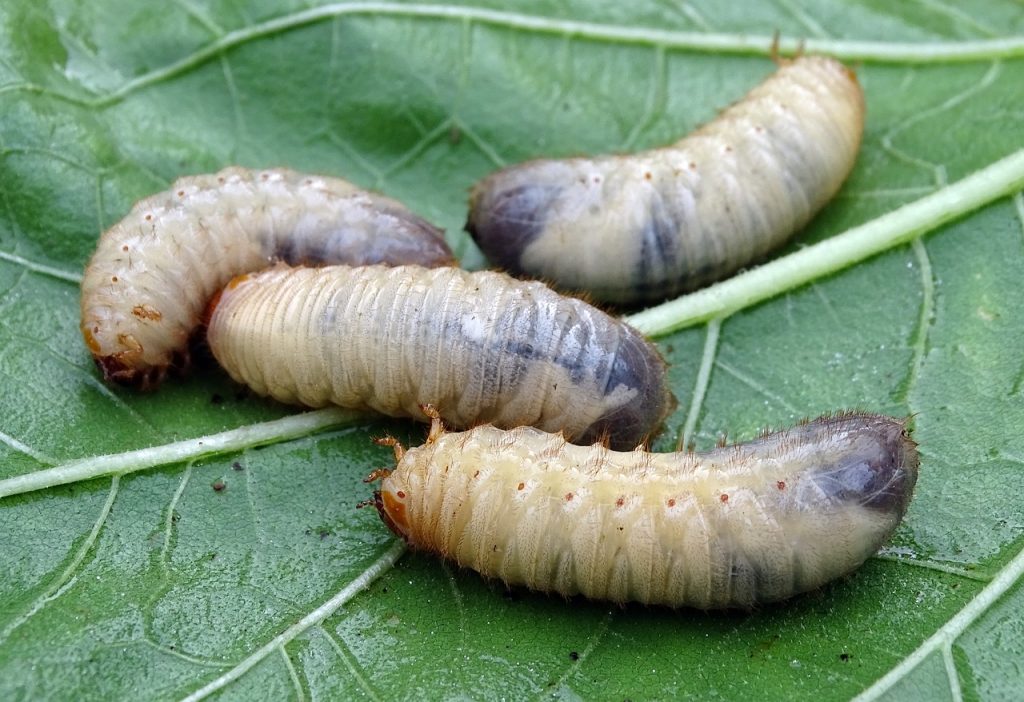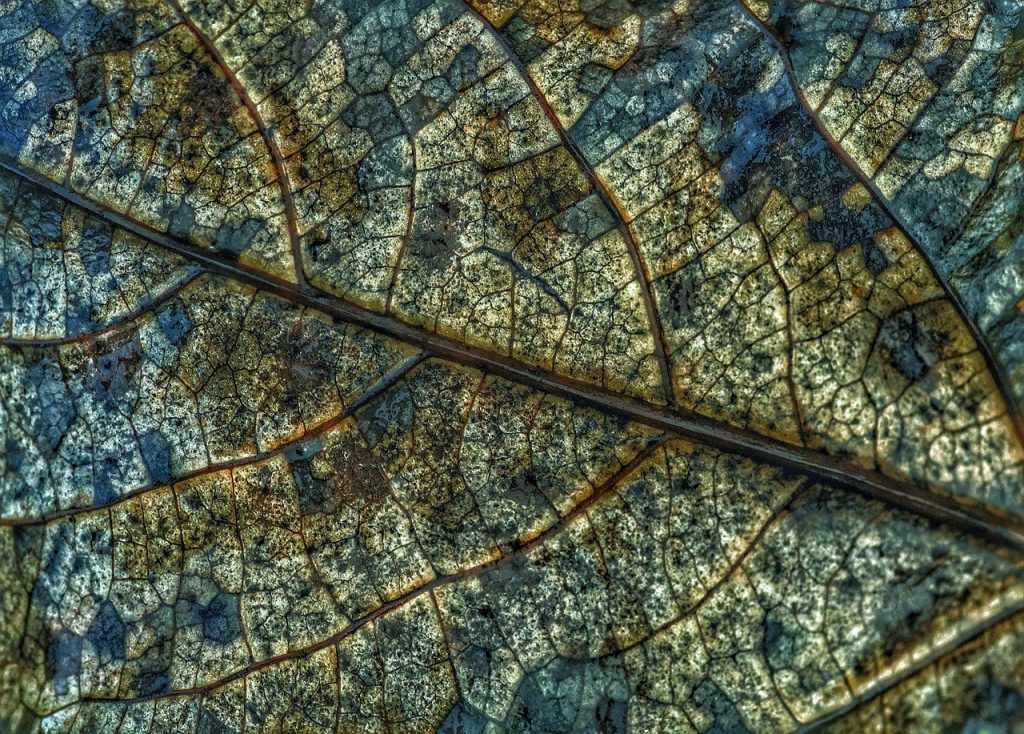Are you unsure about which compost to use for your garden? Don’t worry, we’ve got you covered! When it comes to choosing the perfect compost for your plants, it’s important to consider a few key factors. From the type of plants you’re growing to the overall health of your soil, each element plays a crucial role in determining the right compost for your garden. In this article, we’ll explore different types of compost and provide you with valuable insights to help you make an informed decision. By the end, you’ll be equipped with the knowledge you need to give your garden the boost it deserves!
Table of Contents
ToggleBenefits of Using Compost in Your Garden
Composting is a fantastic way to improve your garden’s health and productivity. By using compost, you can enjoy several benefits that will positively impact your plants and soil. Here are the top reasons why incorporating compost into your garden is a must:
1. Improves Soil Structure
Compost works wonders for soil structure. It helps create a crumbly texture that improves drainage and aeration. This structure allows plant roots to access water more easily and facilitates the exchange of gases between the soil and the atmosphere. With improved soil structure, your plants will have a strong foundation to thrive and grow.
2. Enhances Nutrient Content
One of the primary benefits of compost is its ability to enhance the nutrient content of your soil. Composting breaks down organic matter into nutrient-rich humus, which acts as a natural fertilizer for your plants. By incorporating compost into your garden, you’ll be providing a steady supply of nutrients that plants need for healthy growth. This means stronger, more vibrant plants with higher yields.
3. Retains Moisture
Compost acts as a sponge, helping to retain moisture in your soil. The organic matter in compost holds onto water, preventing it from evaporating too quickly. This is especially beneficial during dry spells or hot summers when water availability becomes a concern. By retaining moisture, compost ensures that your plants have a constant supply of water, even during drought conditions.
4. Promotes Beneficial Microorganisms
Compost is teeming with beneficial microorganisms like bacteria, fungi, and worms. These tiny workers break down organic matter and release nutrients in a form that plants can easily absorb. These microorganisms also contribute to soil health by improving its structure and fighting off harmful pathogens. By introducing compost into your garden, you’re creating a thriving ecosystem of beneficial microbes that will support the overall health of your plants.
5. Reduces Environmental Impact
Using compost in your garden helps reduce your environmental impact. Composting diverts organic waste from landfills, reducing methane gas production. It also minimizes the need for synthetic fertilizers and pesticides, reducing chemical runoff into water sources. By choosing to compost, you’re making a positive difference for the planet while cultivating a healthier garden.
6. Suppresses Weed Growth
Compost can be an excellent ally in your fight against weeds. By creating a thick layer of compost around your plants, you can effectively smother weed growth and prevent their germination. Not only does this save you time and effort spent on weeding, but it also reduces competition for nutrients, water, and sunlight, allowing your desired plants to flourish.
1. Understanding Compost
To make the most of compost for your garden, it’s essential to understand the basics. Let’s dive into what compost is, its components, the composting process, and the different types of compost available.
Definition of Compost
Compost is a dark, crumbly substance that results from the decomposition of organic matter. It is created through a natural process called composting, where bacteria, fungi, worms, and other microorganisms break down materials like kitchen scraps, yard waste, and leaves. The decomposition process transforms these materials into a rich, nutrient-dense product that can be used to improve soil health.
Components of Compost
Compost is made up of organic materials that are rich in carbon and nitrogen. Common components of compost include kitchen scraps (like fruit and vegetable peels), yard waste (such as grass clippings and leaves), shredded paper or cardboard, and even animal manure. The ideal compost pile contains a balance of brown materials (carbon-rich) and green materials (nitrogen-rich) to ensure efficient decomposition.
Composting Process
The composting process involves three basic elements: organic matter, microorganisms, and the right conditions. To compost successfully, you need to provide these elements in the right proportions. As microorganisms break down the organic matter, they generate heat, causing the compost pile’s temperature to rise. This heat promotes the breakdown of materials and kills off any potential weed seeds or pathogens.
Types of Compost
There are several types of compost that you can choose from, each with its specific benefits. Some common types include manure compost, leaf mold compost, green compost, worm castings, mushroom compost, kitchen compost, grass clipping compost, wood and bark compost, seed meal compost, and fish emulsion. Different types of compost cater to different garden needs, so it’s essential to select the right one for your specific situation.
2. Factors to Consider
When deciding which compost to use in your garden, it’s crucial to consider various factors. These factors include soil type and quality, plant nutrient requirements, compost stability, pH level, moisture content, and availability and cost. By taking these factors into account, you can make an informed decision and maximize the benefits of compost for your garden.
Soil Type and Quality
Understanding your soil type is crucial when selecting compost. Different soils have different characteristics, such as clay content, drainage, and fertility. Sandy soils, for example, benefit from compost’s ability to improve water retention, while clay soils benefit from enhanced drainage and aeration. Consider the quality of your soil and choose a compost type that complements its specific needs.
Plant Nutrient Requirements
Different plants have different nutrient requirements. Before selecting a compost type, assess the nutrient needs of the plants in your garden. Leafy greens, for instance, may benefit from compost with higher nitrogen content, while fruiting plants may benefit from compost with a balanced nutrient profile. Understanding your plants’ nutritional needs will help you choose the appropriate compost.
Compost Stability
Compost stability refers to its ability to resist further decomposition once added to the soil. Stable compost releases nutrients slowly over time, ensuring a steady supply for plants. On the other hand, unstable compost breaks down rapidly, potentially causing nutrient imbalances. Consider the stability of the compost you choose, depending on your garden’s needs.
pH Level
The pH level of your soil plays a significant role in plant health and nutrient availability. Compost can influence soil pH, so it’s essential to consider the pH of the compost you’re selecting. Acid-loving plants, like blueberries, prefer acidic soil, while alkaline-loving plants, such as lavender, thrive in more alkaline conditions. Choose compost that aligns with the pH requirements of your plants.
Moisture Content
Moisture content is another crucial factor when selecting compost. Ensure that the compost you choose maintains appropriate moisture levels. Compost that is too dry may not decompose efficiently, while overly wet compost can become anaerobic and emit an unpleasant odor. Look for compost that has a balanced moisture content for optimal performance.
Availability and Cost
Consider the availability and cost of the compost you’re considering. Some types of compost are readily available at local garden centers or through municipal composting programs, while others may require more effort to obtain. Additionally, the cost can vary depending on factors such as the production process, ingredient quality, and brand reputation. Assess the availability and cost to find the best fit for your gardening needs.
3. Types of Compost for Different Garden Needs
Not all composts are created equal. Different types of compost offer unique benefits for specific gardening needs. Let’s explore some of the most common compost options and their advantages:
1. Manure Compost
Manure compost is created by decomposing animal manure, such as cow, horse, or chicken manure. It is an excellent source of nitrogen and other essential nutrients. Manure compost is particularly beneficial for fruiting plants and vegetables that require higher nutrient levels.
2. Leaf Mold Compost
Leaf mold compost is made from decomposed leaves and is rich in organic matter. It improves soil texture and moisture retention. Leaf mold compost is ideal for plants that thrive in a slightly acidic environment, such as ferns, azaleas, and blueberries.
3. Green Compost
Green compost is made from freshly cut grass clippings and garden waste. It is rich in nitrogen and provides a quick release of nutrients. Green compost is best suited for plants that require a boost of nitrogen, such as leafy greens and annual flowers.
4. Worm Castings
Worm castings, also known as vermicompost, are created by redworms decomposing organic materials. They are rich in beneficial microbes, essential nutrients, and plant growth hormones. Worm castings are suitable for a wide range of plants and can help improve overall soil health.
5. Mushroom Compost
Mushroom compost is the byproduct of commercial mushroom farming. It is a blend of organic materials like horse manure, straw, and gypsum. Mushroom compost is an excellent source of nutrients and helps improve soil structure. It is particularly beneficial for growing mushrooms, as well as vegetables and ornamental plants.
6. Kitchen Compost
Kitchen compost is made from food scraps, coffee grounds, and other organic kitchen waste. It is an easy and cost-effective way to recycle food waste and create nutrient-rich compost. Kitchen compost is suitable for all types of plants and adds a diverse range of nutrients to the soil.
7. Grass Clipping Compost
Grass clipping compost is made from dried grass clippings that have gone through the composting process. It adds nitrogen to the soil and helps improve moisture retention. Grass clipping compost is ideal for lawns and gardens that require a nitrogen boost.
8. Wood and Bark Compost
Wood and bark compost are made from chipped or shredded wood and bark. It provides organic matter to the soil and helps improve aeration and water infiltration. Wood and bark compost are beneficial for plants that prefer well-drained soil, such as many trees, shrubs, and perennials.
9. Seed Meal Compost
Seed meal compost is made from crushed seeds, such as cottonseed or soybean meal. It is a slow-release source of nitrogen and acts as a natural fertilizer. Seed meal compost is a good option for organic gardening and is suitable for a wide variety of plants.
10. Fish Emulsion
Fish emulsion is made by decomposing fish waste and is a concentrated source of nitrogen and other nutrients. It provides a quick boost of nutrients and is particularly beneficial for plants during periods of rapid growth or when experiencing nutrient deficiencies.
4. Making Your Own Compost
Creating your own compost is a fulfilling and sustainable way to nourish your garden. By following a few simple steps, you can produce nutrient-rich compost that will benefit your plants and reduce waste. Here’s a guide to making your own compost at home:
Choosing a Composting Method
There are various composting methods to choose from, depending on your space, time, and preferences. Some popular methods include traditional backyard composting, vermicomposting (using worms), compost tumblers or bins, and composting in raised beds. Consider your available resources and select a composting method that suits your needs.
Selecting Composting Ingredients
To create healthy compost, you need a balanced mix of organic materials. Aim for a ratio of approximately three parts brown materials (carbon-rich) to one part green materials (nitrogen-rich). Brown materials can include dried leaves, shredded paper, or wood chips, while green materials can be kitchen scraps, grass clippings, or fresh plant trimmings.
Maintaining the Composting Process
To maintain the composting process, follow these guidelines:
- Create layers: Alternate layers of brown and green materials to ensure proper decomposition and airflow.
- Keep it moist: Maintain adequate moisture levels in the compost pile, similar to a damp sponge.
- Turn it regularly: Every few weeks, use a pitchfork or shovel to turn the compost pile. This helps with aeration, speeds up decomposition, and prevents odors.
- Monitor temperature: Ideally, your compost pile should reach temperatures between 110°F and 160°F (43°C to 71°C). This range ensures the destruction of weed seeds and pathogens.
- Add more materials: Continuously add organic materials to your compost pile to keep it active and balanced.
Compost Curing and Testing
Once your compost has reached a dark, crumbly consistency and no longer resembles its original materials, it is ready to be used. Before applying it to your garden, allow the compost to cure for a few weeks to further break down any remaining organic matter. You can test the maturity of your compost by performing a simple germination test or sending a sample to a soil testing laboratory.
5. Buying Compost
If making your own compost is not feasible, you can easily find high-quality compost at garden centers or through various suppliers. When buying compost, keep the following factors in mind:
Understanding Compost Labels
Compost labels provide valuable information about the compost’s ingredients, nutrient content, manufacturing methods, and any certifications. Familiarize yourself with these labels to ensure that you’re purchasing compost that aligns with your gardening needs.
Verifying Quality and Certification
Look for compost that has been produced by reputable manufacturers and has passed quality control standards. Some composts may also have certifications, such as the USDA Organic label, indicating that they meet specific organic standards. Verifying the quality and certification of the compost ensures that you’re investing in a reliable product.
Comparing Different Brands
There are numerous brands of compost available in the market. Take the time to compare different brands to find the one that suits your needs best. Consider factors like nutrient content, production methods, reputation, and customer reviews. By comparing different brands, you can make an informed decision and select a compost that will deliver the best results for your garden.
Choosing a Reliable Supplier
If you’re buying compost from a supplier, ensure that they have a good track record and reliable customer service. Some suppliers may offer additional services, such as bulk delivery or expert advice. Choosing a reliable supplier ensures that you can access quality compost when you need it and receive any necessary support.
6. Tips for Using Compost Effectively
To maximize the benefits of compost in your garden, consider the following tips and techniques:
Proper Application Rates
It’s essential to apply compost at the correct rates to avoid over or underfeeding your plants. The application rate may vary depending on the type of compost, the soil’s nutrient needs, and the plants being grown. Follow the recommended guidelines provided with the compost or consult a local gardening expert for specific application rates.
Incorporating Compost into Soil
To ensure that the nutrients in compost are readily available to plants, it’s important to incorporate it into the soil. Mix the compost thoroughly with the top few inches of soil, either by hand or with a garden tiller or fork. This ensures that the compost is evenly distributed and that plant roots can access the nutrients.
Mulching with Compost
Using compost as a mulch is an effective way to suppress weeds, retain moisture, and provide a slow-release source of nutrients. Apply a layer of compost around your plants, leaving a slight gap around the stems to prevent moisture buildup and potential rot. This mulch layer helps regulate soil temperature and conserves soil moisture.
Compost Tea and Liquid Fertilizers
Compost tea and liquid fertilizers can provide a quick nutrient boost to plants. Compost tea is created by soaking compost in water and then using the resulting liquid as a foliar spray or soil drench. Liquid fertilizers made from compost extracts can also be used to deliver targeted nutrients to plants. These methods are especially helpful for container gardening or when addressing specific nutritional deficiencies.
7. Compost Dos and Don’ts
To ensure that you’re using compost effectively, keep the following dos and don’ts in mind:
Do’s: Best Practices
- Do test your soil before applying compost to understand its nutrient needs.
- Do layer compost with soil when starting a new garden bed or container.
- Do turn your compost pile regularly to promote decomposition.
- Do use compost from different sources to ensure a diverse range of nutrients.
- Do apply compost as a side dressing during the growing season to provide a nutrient boost.
- Do store compost properly to prevent it from drying out or becoming too wet.
Don’ts: Common Mistakes to Avoid
- Don’t use immature compost that has not fully decomposed, as it may be acidic or contain harmful pathogens.
- Don’t rely on compost as the sole source of nutrients; it should supplement, not replace, a balanced fertilizer program.
- Don’t apply compost in excessive amounts, as this can lead to nutrient imbalances.
- Don’t use compost that smells foul or is of questionable quality.
- Don’t use compost from treated wood products or potentially contaminated materials.
8. Frequently Asked Questions
To address some common queries about compost usage, here are answers to frequently asked questions:
How much compost should I use?
The amount of compost to use depends on factors like soil type, plant nutrient requirements, and the compost’s nutrient content. As a general guideline, apply a one-inch layer of compost to the top few inches of soil or use the recommended application rate provided with the compost.
How often should I apply compost?
In annual gardens, compost is typically applied every year before planting or during the growing season as a side dressing. Perennial gardens may benefit from compost application every two to three years. Consider your plants’ needs and the soil’s nutrient levels to determine the frequency of compost application.
Are there any plants that do not benefit from compost?
While compost benefits most plants, some native or specialized plants may not require additional nutrients or may prefer specific soil conditions. Research the specific requirements of the plants you’re growing to determine if compost is necessary.
Can I use compost as a potting mix?
Compost can be a valuable component of potting mixes. However, it is often necessary to blend compost with other ingredients like peat moss, perlite, or vermiculite to ensure proper drainage and aeration. Consult specialized potting mix recipes or purchase commercially prepared mixes that contain compost.
Can compost be used for indoor gardening?
Compost can be used for indoor gardening, provided it is of high quality and properly sterilized to eliminate any pests or pathogens. It is often incorporated into indoor potting mixes or used as a component in hydroponic systems.
What are the signs of compost-related issues?
Signs of compost-related issues can include stunted plant growth, nutrient deficiencies or excesses, poor drainage, foul odors, or the presence of pests or diseases. If you suspect compost-related problems, consider testing your soil or seeking advice from a local extension service or gardening expert.
Is it possible to overuse compost?
While compost is generally beneficial for plants, using excessive amounts can lead to nutrient imbalances or waterlogging in the soil. Follow recommended application rates, monitor your plants’ health, and regularly assess soil conditions to ensure the optimal use of compost.
9. Conclusion
Using compost in your garden offers numerous benefits that can improve soil structure, enhance nutrient content, retain moisture, promote beneficial microorganisms, reduce environmental impact, and suppress weed growth. By understanding the different types of compost, considering relevant factors, and utilizing compost effectively, you can transform your garden into a thriving and sustainable oasis. Choose the right compost for your garden’s specific needs, whether it’s through making your own or purchasing from a reliable supplier. Embrace composting as a rewarding practice and watch your garden flourish with the help of this natural and renewable resource.









